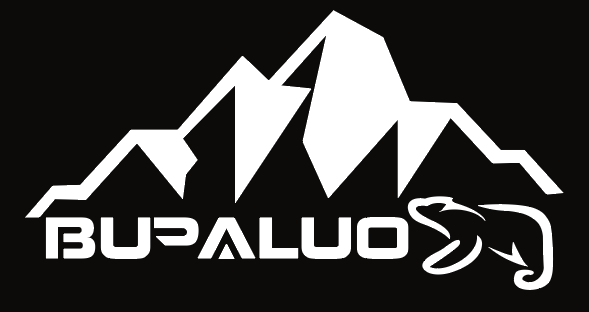RPET fabric is a new type of environmentally friendly recycled fabric, full RecycledPET Fabric (recycled polyester fabric
).the raw material is from recycled bottles by goods seized separation – sliced – spinning, cooling set silk yarn made of RPET, commonly known as Coke bottle green cloth. The fabric is recyclable, you can save energy, oil consumption and reduce carbon dioxide emissions, every pound of recycled RPET fabric, you can save 61000BTU energy, the equivalent of 21 pounds of carbon dioxide. Fabric dyeing and environmental protection through environmental protection coating, calendering, too, are available through MTL, SGS, ITS and other international standards for testing, including phthalates (6P), formaldehyde, lead (Pb), polycyclic aromatic hydrocarbons, azelaic Kiefen other environmental indicators have reached the latest European environmental standards and the latest U.S. environmental standards.
2.Organic Cotton
Organic cotton is in agricultural production, organic fertilizer, biological pest management based natural farming, and not to use chemicals, from seed to produce all-natural pollution-free production of cotton. And in each country or WTO / FAO promulgated the “agricultural product safety and quality standards” for the measure, cotton pesticides, heavy metals, nitrates, harmful organisms (including microorganisms, parasite eggs, etc.) and other toxic and hazardous substances control limit specified in the standard range inside and get certified cotton goods.
3.Colored Cotton
Cotton, colored cotton is a new type of fiber has natural color cotton. Naturally colored cotton is the use of modern bio-engineering technology to cultivate out of a boll of cotton fiber when it has the natural color of the new textile materials, compared with ordinary cotton with soft, breathable, flexible, comfortable features, it is also known a higher level of ecological cotton. Internationally known as zero pollution (Zeropollution). As in the cultivation of organic cotton and textile process to maintain the natural features, existing chemical synthetic dyes can stain them. Only use natural vegetable dyes for natural dyeing. After natural dyed organic cotton has more colors, to meet the need for more. According to the experts predict that in the early 2000s, brown, green will be the color of clothing. It embodies ecology, nature, leisure, fashion trends. Cotton clothing in addition to brown, green outside, is gradually developing blue, purple, gray and red, brown and other colors of clothing varieties.
4.Soybean fiber
Soybean protein fiber is biodegradable, renewable plant protein fibers, natural fibers and the fiber has many excellent properties of chemical fiber. The fabric has a texture like cashmere, silk-like sheen and cotton breathable warmth, skin-friendly comfort, domestic and foreign experts as the “21st Century Health comfort fiber.” Soybean protein fibers and filaments similar, good drape, surface texture and delicate, is ideal for high-end shirt fabric. It also contains a variety of essential amino acids, suitable for wearing. China is second only to Turkey, India, the world’s third largest producer of organic cotton, Xinjiang is a major production center. Organic cotton farming process can not be used or only a small amount of use of chemical pesticides and other chemical products, organic fertilizer, biological pest natural farming mainly from seed to be all-natural pollution-free agricultural products. Organic cotton fabrics clothing fabrics expensive than traditional 50%.
5.Hemp fiber
Hemp fibers are made from a variety of hemp plant fibers, including annual or perennial herbaceous dicots cortex bast fiber and leaf fiber monocots. Bast fiber crops mainly ramie, jute, ramie, flax, kenaf Apocynum and so on. Including hemp, flax, etc. Apocynum not lignified cell wall, with the thickness of the fiber length of cotton are similar, can be used for textile materials, woven into a variety of cool linen, linen, also with cotton, wool, silk or synthetic blends. Hemp fiber is stronger than cotton fiber, up to 6.5 g / denier; small elongation, only half of the cotton fiber, about 3.5%, compared with cotton fibers brittle. Hemp and flax fiber surface is smooth, easily adsorbed moisture, moisture in the atmosphere scatter moder
Modal is also a common environmental fabric, commonly used in high-end underwear. Modal fiber is beech wood as a raw material Lyocell (Lai Seer) fibers, natural, biodegradable, gorgeous set of natural fabrics and synthetic textures practicality in one, soft, shiny as silk, smooth, moisture, breathable performance are better than cotton, bamboo fiber fabric more off than both dyed color after repeated washing still full and bright. According Shaoxing Jin Yue said, Modal fabric imports at $ 7.04 per kg more than the price, while Taiwan modal only $ 4.23 or so, nearly half of the difference.
6.Organic wool
Organic wool produced without chemicals and GMO farms. These sheep stocking, fully grown in nature so that the wool industry has therefore become an exciting new topic in recent months, the market for organic wool surge of interest.
7.Viscose (logs Tencel)
A sport-type environmentally friendly fabrics, because of their special molecular structure of nano-thread, just like fabric surface air circulation pipeline, to ensure adequate circulation of oxygen, lock in moisture, therefore, have a very good effect of humidity. Experts have pointed out that the fabric, this fabric has superior antistatic properties, does not produce the feeling attached to the body, which is very smooth, especially for sports wear. Most of its moisture content of human skin physiological requirements, have good air permeability and humidity function, is consistent with international media called the “breath of fabric.” Its fabric has a soft, smooth, cool, breathable, antistatic, stain brilliant advantages.
